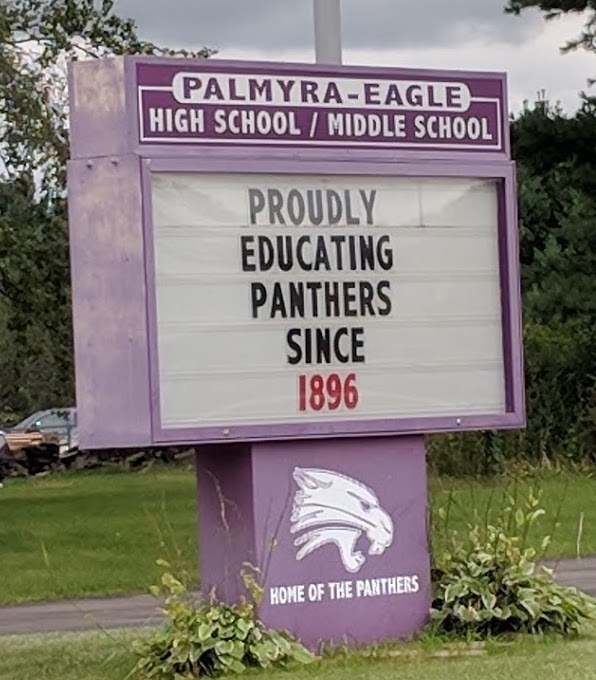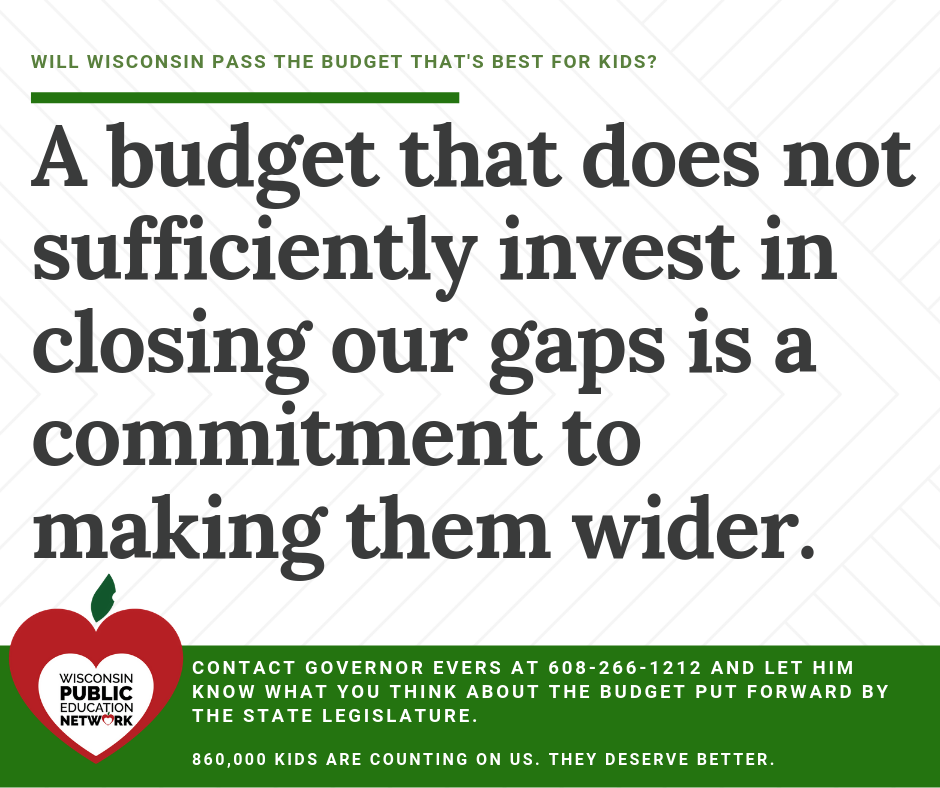December 2, 2022 is Special Education Day.
Read this guest column from our executive director Heather DuBois Bourenane, published in the Sun Prairie Star on October 28, 2022, here.
Also, read State Superintendent Dr. Jill Underly’s editorial for the Department of Public Instruction here.
WISCONSIN CAN END FUNDING DISCRIMINATION FOR STUDENTS WITH DISABILITIES
The beautiful thing about public schools is that they accept all students and provide equal opportunities for all children to thrive. When schools have the resources to provide robust, integrated, and inclusive learning environments, all of our students do better.
Unfortunately, however, Wisconsin public school students have been systematically deprived of resources, chronically underserved by decades of cuts and a state funding system that pits property tax politics against students’ needs.
Nowhere is this unfairness more evident, or more damaging, than in the way the state underfunds special education. State aid has been shamefully inadequate for decades, while costs and needs continue to rise. Wisconsin has the resources to meet the needs of all learners, and yet, we don’t.
Here’s how it works: public schools have a legal and moral obligation to meet the needs of all students, and federal laws protect the rights of students with disabilities. Public schools are required to provide testing and services for all students with disabilities.
But the state doesn’t allocate funds to school districts to cover actual special education costs. Instead, it only reimburses districts for a small percentage of their prior year’s costs.
To fill the gap, districts must divert money from their general funds. This puts the promise of public schools at odds with the uncertainty of resources, leaving local students in the middle of the state’s messy system.
The state once covered the majority of a district’s special education costs, reimbursing nearly 70% of costs in the 1980s. The 2022-2023 rate for reimbursement is now hovering just under 30%.
National experts who testified on Wisconsin’s special education funding model at state hearings have referred to this as “pitiful” and “inadequate” and “worst in the nation.”
When some lawmakers refuse to fund special education, all students pay the price.
Over 1.25 billion dollars a year is currently spent from local school districts’ general funds to cover unreimbursed special education costs. That’s 1.25 billion dollars worth of teachers, staff, programs, and curriculum. It’s 1.25 billion dollars worth of laptops and fixing leaky roofs and school psychologists and music class and safe, secure school buildings. It’s 1.25 billion dollars that should be spent on “all the things” but can’t, because the state refuses to meet its obligation to this one, absolutely critical thing.
When the state funding formula was challenged back in 1999 because of the many ways it inequitably and unfairly allocates resources, the system was upheld, but with a big caveat.
The Wisconsin Supreme Court warned that there were three areas the state risked failing to meet its standard of “equal opportunity for a sound basic education:” in meeting the needs of students with disabilities, economically disadvantaged students, and English language learners.
Since this ruling, the state has failed to close the gaps for students in any of these categories. The state has not increased funding, while needs and costs have risen. This forces districts to either go to referenda to raise more money, or cut general programs and services.
To add insult to these injuries, in 2017 the state legislature mandated a permanent 90% reimbursement rate for special education costs for students attending private schools. This reimbursement is on top of the special education voucher payment—currently over $13,000 per student.
But the good news is this: we could fix all this right now. We have a state budget proposal from the Governor and State Superintendent which would put us on a path to end this inequity. The proposed plan would restore the reimbursement immediately to 45%, then raise it gradually to 90% over the next four years.
It’s a plan that is consistent with the bipartisan Blue Ribbon Commission on State Funding’s recommendations. It’s a plan we can afford. The state is sitting on a record surplus with over $7 billion in reserve. We could close the special education funding gap today and still have $5 billion left over.
So, if we have the money, and we have the plan, why is it so hard to find the will?
Why are so many of our lawmakers so committed to preserving this unfairness? What objection do they have to ensuring that every single student in every single public school has equal access to the resources they need to succeed?
It’s up to us—as voters and as active participants in the democratic governance of our local public schools—to provide our own answers to these questions.
Let’s end this discrimination by holding our leaders accountable for doing better by all of our children. Let’s restore our commitment to strong public schools by demanding a budget that fully serves our most vulnerable learners, so that all of Wisconsin’s children have what they need to shine.








